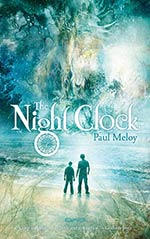
![]() charlesdee
charlesdee
12/13/2015
![]()
I had this as an advanced reader's copy through Net Galley, and I went into it knowing nothing of the author or the plot. I don't know, however, that much prior information would have helped me with the first couple of chapters. Meloy dumps us into a netherworld where the planet Mars takes the place of the moon, and characters I sensed were the good guys kept to their side of the street while a pub across the way served as a passageway for very bad things to enter their world. The next chapter involved a farm house bothered by a zombiefied relative who ate hot stew with his bare hands, had to be led away on the tines of a pitchfork, and set on fire in a field.
It took me several pages into the next sequence to realize that Meloy was settling down to his plot. A housing estate somewhere in the UK, with its boarded up shops, council flats, graffiti-covered walls, and threats of violence suggested a dystopian, post-apocalyptic setting, but no, this is just a miserable place to live. Meloy can really pack in the information. With the background of a mass shooting at a day care center, he introduces us to a feckless estate patrolman, an alcoholic hanging onto some sense of dignity, and a social worker whose cases have begun to either kill themselves or others. And there are monsters, hideous creatures that can possess the weak and pursue those who might be a threat to them.

Paul Meloy
Meloy has worked as a psychiatric nurse, and this section grounded in the world of the housing estate, with his hero Phil Travena dealing with suicidal and homicidal clients, a weaselly new boss brought in to "tighten the ship," drunks and a growing sense that these monsters may not be hallucinations sets the action in both a very real and very creepy world. Once we are part of the pitched battle between good and evil, things take on the more predictable cast that such battles usually entail. But Meloy continues to create inventive situations, engaging characters, and grand set pieces. His monsters are spectacular creations that wear their debt to Lovecraft lightly. The talking animals are a problem, but that could be my inherent resistance to talking animals.
Much of the plot involves the impending birth of Chloe, a child whose existence is crucial to victory over the dark forces. In one of Meloy's most successful narrative devices, we get to know Chloe as an adult character, stranded in a dangerous world as she waits to be born. There are also a man and his son who start as characters in a children's book who become major players in the battle.
At times I felt that Meloy's story needed a larger canvas than he provides, but when I weighed that against his ability to wrap things up as quickly as he did, I decided he made the right choice. He ties things up well. That illogical zombie scene from the first pages even makes sense by the time the story is over. And although he doesn't end with cliffhangers, Meloy could easily return to this world for further novels.